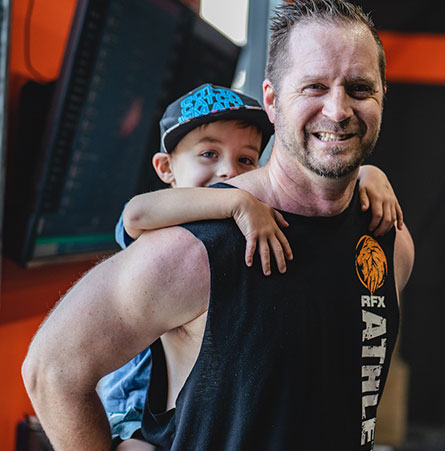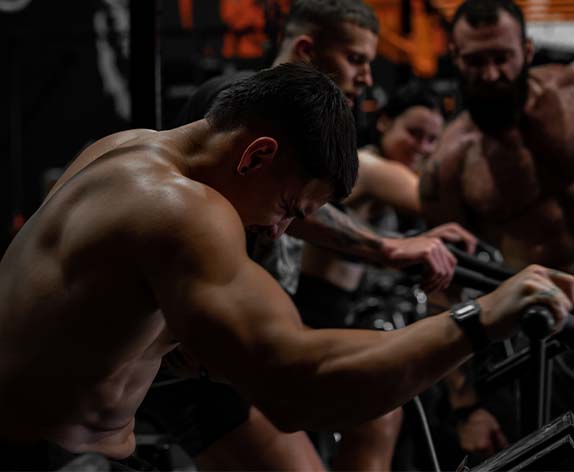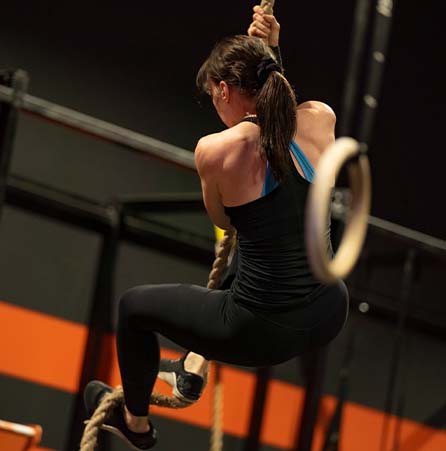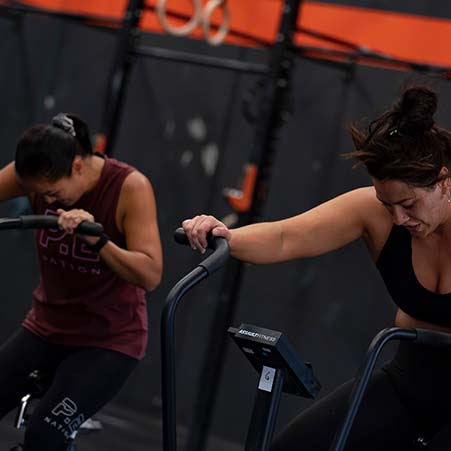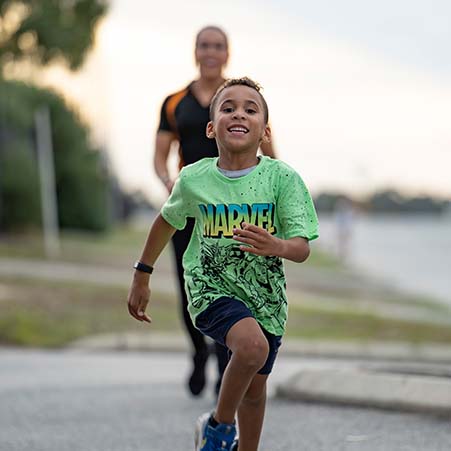CrossFit can be an exhilarating way to stay fit, but it can also come with its fair share of risks if safety isn’t a priority. We dive into the essential strategies and tips to keep injuries at bay while enjoying your CrossFit journey. From understanding safety protocols to the role of professional coaching, we’ve got you covered with practical advice to help you train smart and stay safe.
Key Takeaways
- Always warm up properly before workouts to prepare your body.
- Listen to your body and recognise when to take breaks or scale back.
- Work with certified coaches to ensure you maintain correct form.
- Make modifications to workouts based on your fitness level and experience.
- Stay hydrated and fuel your body with the right nutrition to support your training.
Understanding CrossFit Safety Protocols
CrossFit is awesome, but CrossFit safety should always be your top priority. It’s not just about pushing yourself; it’s about pushing yourself smart. Understanding and implementing proper safety protocols is key to staying injury-free and making long-term progress. So, how do you avoid injuries in CrossFit training?
Importance of Proper Warm-Up
A good warm-up is absolutely vital. Think of it like prepping your car before a long drive – you wouldn’t just jump in and floor it, would you? Your muscles need to be ready for the intensity of a WOD (Workout of the Day). A proper warm-up should include:
- Dynamic stretching: Things like arm circles, leg swings, and torso twists. These improve blood flow and flexibility.
- Light cardio: A few minutes on the rower or skipping rope to get your heart rate up.
- Movement-specific drills: Practising the movements you’ll be doing in the workout with lighter weights or just bodyweight. This primes your nervous system and reinforces correct form.
Skipping the warm-up is like asking for an injury. It’s not worth the risk. Take the time to prepare your body properly; you’ll perform better and feel better.
Cool-Down Techniques
Just as important as the warm-up, the cool-down helps your body recover after a tough workout. It’s not just about stopping and collapsing on the floor! A good cool-down helps reduce muscle soreness and prevent injuries. Here’s what to include:
- Static stretching: Holding stretches for 20-30 seconds to improve flexibility.
- Light cardio: A gentle walk or cycle to help flush out lactic acid.
- Foam rolling: Targeting tight muscles to release tension and improve recovery.
Recognising Signs of Fatigue
Learning to listen to your body is one of the most important CrossFit techniques you can develop. Pushing through pain is a recipe for disaster. Fatigue can manifest in different ways, including:
- Decreased performance: If you’re suddenly struggling with weights, you usually handle easily.
- Poor form: When you’re tired, your technique often suffers, increasing the risk of injury. Watch out for common form mistakes to avoid.
- Increased heart rate: If your heart rate is unusually high even during rest periods.
If you notice any of these signs, it’s time to scale back the intensity, take a break, or even stop the workout altogether. There’s no shame in knowing your limits. Remember, consistency is key, and you can’t be consistent if you’re injured. Prioritise your well-being, and you’ll be able to train for longer.
The Role of Professional Coaching
CrossFit can be intense, and having a good coach is like having a co-pilot. They’re there to guide you, keep you safe, and help you get the most out of every session. It’s not just about someone yelling instructions; it’s about getting real, personalised support.
Benefits of Certified Trainers
Think of a certified CrossFit trainer as someone who’s done their homework. They’ve gone through rigorous training, understand the biomechanics of each movement, and know how to spot potential problems before they turn into injuries. They’re not just repeating what they’ve heard; they’re applying proven methods. A good trainer can also modify exercises to accommodate past injuries or physical limitations, ensuring you stay safe while still pushing toward your goals.
Personalised Feedback
Generic workout plans might get you started, but they won’t get you far. A professional coach will watch you move, assess your strengths and weaknesses, and tailor a programme specifically for you. This personalised approach ensures you focus on exercises that provide the best results. As you progress, trainers adapt your routine to keep it challenging, helping you avoid stagnation and continue making gains over time. It’s about having someone in your corner who understands your body and your goals.
Ensuring Correct Form
One of the biggest risks in CrossFit is using bad form, especially when you’re tired. A coach is there to keep an eye on your technique, correct any errors, and make sure you’re moving safely. This isn’t just about preventing injuries; it’s also about making sure you’re actually working the right muscles and getting the most out of each exercise. They’ll cue you on proper posture, alignment, and technique. It’s like having a built-in safety net, ensuring you’re always moving in the right direction.
Having a coach isn’t a luxury; it’s an investment in your long-term health and fitness. They provide the knowledge, support, and accountability you need to stay safe, progress effectively, and achieve your goals.
Modifications for All Fitness Levels
CrossFit can seem intimidating, especially when you see experienced athletes throwing around heavy weights and performing complex gymnastics movements. But the beauty of CrossFit is its scalability. It truly is for everyone, regardless of your current fitness level. The key is understanding how to modify workouts to suit your individual needs and abilities. At RFX CrossFit Athletic, we ensure everyone can participate safely and effectively.
Scaling Workouts for Beginners
Starting CrossFit doesn’t mean you need to be able to do everything straight away. Scaling is the process of adjusting workouts to match your current capabilities. This might involve reducing the weight, modifying the movements, or decreasing the number of repetitions. For example, if you can’t do a full pull-up, you might start with banded pull-ups or ring rows. If a barbell squat feels too heavy, try goblet squats with a dumbbell. The goal is to maintain the intended stimulus of the workout while working within your limits.
Adjusting Weights and Movements
It’s not just about being a beginner; even experienced athletes need to adjust weights and movements based on how their body feels on a particular day. Maybe you’re recovering from an injury, feeling fatigued, or just having an off day. Don’t be afraid to scale back the weight or choose a different movement that targets the same muscle groups but is less taxing. For example, swap overhead squats for front squats, or box jumps for step-ups. Listening to your body and making smart adjustments is crucial for preventing injuries and ensuring long-term progress.
Progressing Safely Over Time
Progress in CrossFit should be gradual and sustainable. Avoid the temptation to push yourself too hard, too soon. Focus on mastering the fundamentals before moving on to more advanced movements or heavier weights.
Here are some tips for safe progression:
- Prioritise proper form: Always maintain good technique, even if it means using a lighter weight.
- Increase weight gradually: Only add weight when you can comfortably perform the movement with good form.
- Listen to your body: Rest when you need to, and don’t push through pain.
Remember, consistency is key. It’s better to make slow, steady progress than to risk injury by trying to do too much too soon. Over time, you’ll build strength, improve your technique, and be able to tackle more challenging workouts. The coaches at RFX Athletic provide modifications to help you build strength and confidence while maintaining proper form and safety.
Injury Prevention Strategies
Focus on Mobility and Flexibility
Mobility and flexibility are your secret weapons in the fight against injuries. Think of your body like a well-oiled machine; if the joints are stiff and the muscles are tight, things are bound to break down. Regular stretching, foam rolling, and mobility exercises help keep everything moving smoothly.
- Dynamic stretching before a workout prepares your muscles for action.
- Static stretching after a workout helps improve flexibility and reduce muscle soreness.
- Foam rolling can release tension in tight muscles and improve blood flow.
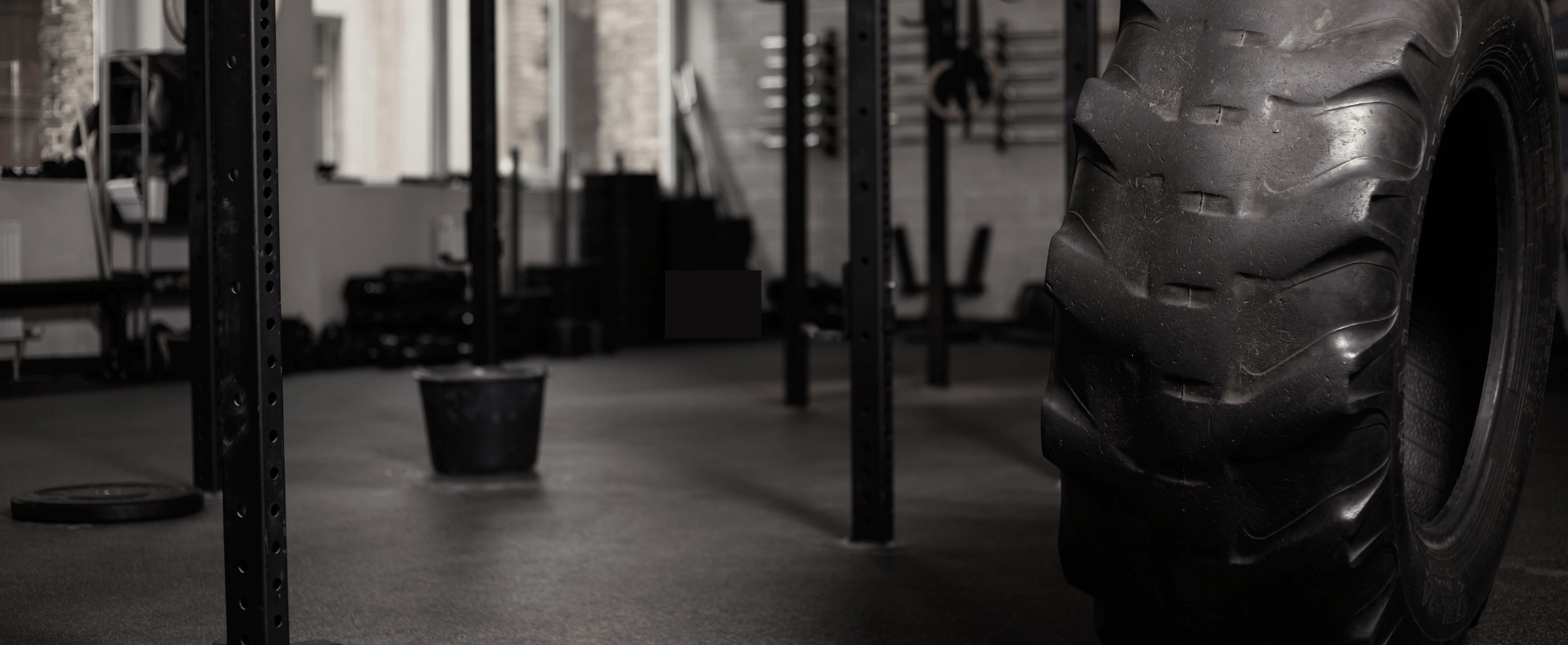
Incorporating Rest Days
Rest days aren’t for the weak; they’re for the smart! Pushing yourself too hard, day after day, is a recipe for disaster. Your body needs time to recover and rebuild. Overtraining can lead to fatigue, decreased performance, and, you guessed it, injuries. Schedule rest days into your training programme and stick to them.
- Active recovery, like a light walk or swim, can help improve blood flow and reduce muscle soreness on rest days.
- Prioritise sleep; aim for 7-9 hours of quality sleep each night to allow your body to recover fully.
- Listen to your body; if you’re feeling excessively tired or sore, take an extra rest day.
Listening to Your Body
This might sound obvious, but it’s often the most overlooked aspect of injury prevention. Your body is constantly giving you feedback; it’s up to you to listen. Pain is a signal that something isn’t right. Don’t ignore it! Pushing through pain can turn a minor niggle into a major injury that sidelines you for weeks or even months. Learn to differentiate between discomfort and pain, and don’t be afraid to modify or stop a workout if something doesn’t feel right.
Ignoring pain is like ignoring the warning lights on your car’s dashboard. It might seem okay for a while, but eventually, something’s going to break down. Pay attention to what your body is telling you, and don’t be afraid to seek professional help if needed.
Here are some things to consider:
- Pay attention to your form; poor form can put unnecessary stress on your joints and muscles.
- Don’t compare yourself to others; everyone’s body is different, and what works for one person might not work for you.
- Be patient; progress takes time, and pushing yourself too hard too soon can increase your risk of injury.
Creating a Supportive Community
CrossFit isn’t just about individual achievement; it’s also about the community you build around you. A supportive environment can make all the difference in sticking to your goals and pushing past your limits. It’s about finding people who understand the challenges and celebrate the victories with you. Let’s look at how to build that kind of community.
Encouraging Accountability
Having someone to hold you accountable can be a game-changer. It’s easy to skip a workout when you only have to answer to yourself, but knowing someone else is expecting you can provide that extra push. Find a workout buddy or join a group where you can share your goals and progress.
- Set shared goals: Agree on workout schedules and fitness targets together.
- Check in regularly: Keep each other updated on progress and challenges.
- Celebrate milestones: Acknowledge each other’s achievements to boost morale.
Building Relationships in Classes
Your CrossFit classes are a goldmine for building relationships. Take the time to chat with your classmates before and after workouts. Offer encouragement and support, and be open to receiving it in return. Shared experiences create strong bonds. RFX Athletic’s classes foster camaraderie, making it easier to stay committed.
A simple “Good job today!” or “Keep pushing!” can go a long way in building a supportive atmosphere. Remember, everyone is there to improve, and a little encouragement can make a big difference.
Sharing Experiences and Tips
Don’t be afraid to share your own experiences and tips with others. Whether it’s a modification that helped you overcome a challenge or a nutrition tips and resources that boosted your energy, your insights can be valuable to someone else. Creating a culture of sharing helps everyone learn and grow together.
- Start a group chat or forum for sharing tips and advice.
- Organise informal gatherings outside of class to connect on a personal level.
- Celebrate personal bests and milestones as a group.
Essential Equipment for Safe Training
Okay, so you’re getting into CrossFit, which is awesome! But before you start throwing around weights and doing crazy pull-ups, let’s chat about gear. Having the right stuff isn’t just about looking the part; it’s about keeping you safe and helping you perform your best. I remember when I first started, I thought any old shoes would do… big mistake! Ended up with blisters and sore ankles. Learn from my mistakes, yeah?
Choosing the Right Gear
So, what exactly do you need? Well, it depends on the workouts, but here’s a rundown of some essentials:
- Shoes: This is huge. You want something stable for lifting but also flexible enough for running and jumping. CrossFit shoes are designed for this, but running shoes are okay to start with. Just avoid anything too squishy.
- Wrist Wraps: These give your wrists extra support during heavy lifts. If you’re doing a lot of overhead work, they can be a lifesaver.
- Weightlifting Belt: A good belt can help you maintain proper form and protect your lower back when lifting heavy. But don’t rely on it too much; you still need to build core strength.
- Knee Sleeves: These provide compression and warmth for your knees, which can be helpful for squats and other leg exercises. They’re not a substitute for good form, though!
- Proper Clothing: Wear clothes that allow you to move freely and breathe. Avoid anything too baggy that could get caught on equipment.
Maintaining Equipment
Looking after your gear is just as important as choosing the right stuff. Here’s the thing: if your equipment fails, you could get hurt.
- Check for Wear and Tear: Before each workout, give your gear a quick once-over. Look for frayed straps, loose seams, or any other signs of damage.
- Clean Regularly: Sweat and chalk can build up and damage your equipment over time. Wipe down your gear after each workout to keep it in good condition.
- Store Properly: Don’t just throw your gear in a heap in your gym bag. Store it in a cool, dry place to prevent damage.
It’s easy to overlook maintenance, but a little bit of care can go a long way in extending the life of your equipment and keeping you safe. Plus, nobody wants to be that person whose gear is falling apart mid-WOD.
Understanding Equipment Limitations
Knowing what your equipment can and can’t do is super important. Don’t push your gear beyond its limits, or you’re asking for trouble. For example, just because your weightlifting belt can handle a certain weight doesn’t mean you can. Listen to your body and don’t try to lift more than you’re ready for.
Also, be aware of the limitations of different types of equipment. For example, some wrist wraps are designed for lighter weights, while others are built for heavier lifts. Choose the right gear for the job and don’t try to use something that’s not up to the task. If you’re unsure, ask a coach or experienced CrossFitter for advice. They’ll be able to point you in the right direction and help you choose gear that’s appropriate for your fitness level and goals.
Nutrition’s Impact on Performance and Safety
CrossFit is intense, no doubt about it. But smashing out WODs isn’t just about the workout itself. What you eat – and when – plays a massive role in how well you perform and how safely you train. Think of your body as a high-performance car; you wouldn’t put cheap fuel in it, would you? Same goes for your body. Let’s look at how to fuel up properly.
Fueling Your Workouts
Carbohydrates are your body’s primary source of energy, especially during those high-intensity CrossFit sessions. Think of them as the petrol in your tank. But not all carbs are created equal. Opt for complex carbs like sweet potatoes, brown rice, and oats. These release energy slowly, keeping you powered for longer. Simple carbs, like sugary drinks, give you a quick burst but lead to a crash. Protein is also important, but it’s more for repair than immediate fuel. A good pre-workout meal or snack should include a mix of complex carbs and a bit of protein. For example, some oats with berries and a scoop of protein powder.
Hydration Strategies
Dehydration is a performance killer. Even mild dehydration can lead to decreased strength, endurance, and focus. And in CrossFit, where you’re pushing your limits, that’s a recipe for disaster. You’re losing fluids through sweat, so you need to replace them. Water is great, but during longer or more intense workouts, consider electrolyte drinks. These help replace the sodium, potassium, and other minerals you lose through sweat. How much should you drink? A good rule of thumb is to sip water throughout the day, not just during your workout. Aim for clear urine – that’s a good sign you’re hydrated. If you’re doing a particularly tough WOD, start hydrating well in advance.
Recovery Nutrition
What you eat after your workout is just as important as what you eat before. This is when your body needs to repair muscle tissue and replenish energy stores. Protein is key here. Aim for a post-workout meal or snack that contains a good source of protein, like chicken, fish, eggs, or a protein shake. Combine that with some carbs to replenish glycogen stores. A protein shake with a banana is a simple and effective option. Don’t skip this step! Recovery nutrition helps you bounce back faster and prevents injuries. Neglecting post-workout recovery can impede muscle repair and lead to longer recovery times. It’s essential to treat nutrition as a full-day process, with attention to both pre- and post-workout needs.
Listen to your body. Everyone is different, so what works for one person might not work for another. Experiment with different foods and timing to see what fuels you best. And if you’re unsure, consult a nutritionist or dietitian. They can help you create a personalised nutrition plan that supports your CrossFit goals and keeps you safe.
What you eat can really change how well you perform and how safe you are during workouts. Good nutrition helps your body work better and can keep you from getting hurt. If you want to learn more about how to fuel your body for success, check out our website for tips and advice!
Wrapping It Up
In conclusion, keeping safe while doing CrossFit is super important. Whether you’re just starting out or you’ve been at it for a while, focusing on your form, taking breaks, and working on your mobility can really help prevent injuries. Remember, it’s not just about pushing hard; it’s about training smart. Our coaches at RFX are here to guide you every step of the way, making sure you get the most out of your workouts without risking your health. So, take it slow, listen to your body, and enjoy the journey. You’ve got this!
Frequently Asked Questions
Is CrossFit good for beginners?
Absolutely! CrossFit can be adjusted for all fitness levels, so beginners can start safely. At RFX, our trainers help make sure you get the right support.
How many times a week should I do CrossFit?
It’s best to do CrossFit about 3 to 5 times a week. But it really depends on what you’re aiming for and your fitness level. Our coaches can help you find the right balance.
Can CrossFit help me lose weight?
Yes! CrossFit mixes strength training with high-energy cardio, which is great for burning fat while keeping your muscle.
What happens in a typical CrossFit class?
In a usual class, you’ll start with a warm-up, then work on skills or strength, do the main workout of the day (WOD), and finish with a cool-down.
How can I avoid getting hurt while doing CrossFit?
To stay safe, always warm up properly, listen to your body, and don’t rush your progress. Our coaches at RFX are here to guide you on correct form.
What should I eat before a CrossFit workout?
It’s good to have a light snack that includes carbs and protein about an hour before your workout. This gives you energy without feeling too full.






